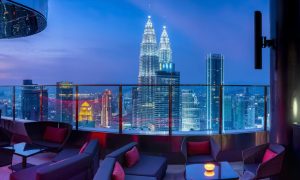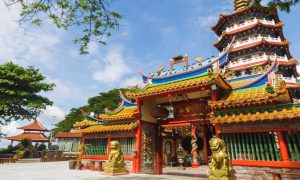.jpg) After a hard day’s work, there is nothing better than winding down with some rest and relaxation to melt away the stresses of daily life. In Malaysia, we are lucky enough to have a choice of many affordable de-stress therapies, from full body massages and exfoliating scrubs to Asian remedial therapies, that will not burn a hole in your pocket.
After a hard day’s work, there is nothing better than winding down with some rest and relaxation to melt away the stresses of daily life. In Malaysia, we are lucky enough to have a choice of many affordable de-stress therapies, from full body massages and exfoliating scrubs to Asian remedial therapies, that will not burn a hole in your pocket.
Reflexology is one such example of remedial therapy that has gained much popularity in recent years. Sometimes perceived as alternative medicine, it involves the applying of pressure to the feet, hands, or ears with specific thumb, finger, and hand techniques, sometimes with the aid of lotion or oil.
The underlying theory behind reflexology is that there are reflex areas on the feet and hands that correspond to specific organs, glands, and other parts of the human body. These include:
- the tips of the toes reflecting the head
- the heart and chest being located the ball of the foot
- the lever, pancreas, and kidney corresponding with the arch of the foot
- the lower back and intestines being near the heel
HISTORY
Reflexology is an ancient practice, making its origins and history challenging to track down. It is thought to have been passed down through an oral tradition and possibly first recorded as a pictograph on the Egyptian tomb of Ankhamor (an influential official second only to the king) in 2330 BCE.
Reflexology symbols are also believed to have been recorded on the feet of Buddha statues in India as well as those in China. The Yellow Emperor’s Classic of Internal Medicine, written around 1000 BCE, is thought to be the beginning of print discussions concerning the connection of life forces with the points and areas on the feet. It is also believed that the explorer Marco Polo translated a Chinese massage book into Italian in the 1300s, thus introducing reflexology and massage to Europe in those early years.
The revival of this art came about in 1917 when William H. Fitzgerald, the American man frequently referred to as the father of reflexology, wrote about ten vertical zones that extended the length of the body. Fitzgerald found that the application of pressure to a zone that corresponded to the location of an injury could serve to relieve pain during minor surgeries, thus bringing out the first modern take on this ancient art.
Dr. Fitzgerald’s work was later expanded on by Dr. Shelby Riley, who developed a map of horizontal zones going across the body, a detailed map of reflex points on the feet and hands and one of pressure points on the outer ear. Eunice Ingham, a physiotherapist who worked for Dr. Riley, is another prominent figure in the development of reflexology. In her research with zone therapy’s pressure points, she found the feet to be the most sensitive and responsive area of the entire body. In the 1930s, she developed foot maps still in use today and introduced reflexology practices to the non-medical community.
MODERN USE
Reflexologists believe that the blockage of an energy field or invisible life force (otherwise known as Qi) can prevent healing. Thus, the massaging and treating of specific parts of the foot can release this energy in order to promote better health.
Practitioners believe they can relieve stress and pain in other parts of the body through the manipulation of the feet. The pressure put on the feet is perceived to send signals that “balance” the nervous system or release chemicals, such as endorphins, that reduce stress and pain.
Reflexology is also believed to combat many ailments including:
- Tension headaches
- Digestive disorders
- Arthritis
- Insomnia
- Hormonal imbalances
- Sports injuries
- Pre-menstrual syndrome (PMS)
- Digestive problems
- Back pain
Whether it’s for relaxation or remedy, reflexology has found its place in most Asian cities as an affordable and time-effective solution to stress, aches, and pains. Why not give it a go?
———————————————————————————————————
Source: The Expat October 2012
Read more:
- Dr. Harjit Kaur Perdamen; Doctor, Friend, Mentor and Surgeon
- Sunway Medical Centre: Care you can Trust
- Dental Care in Malaysia




















